Archive for March, 2021
2021 Convertibles with Reasonable Prices
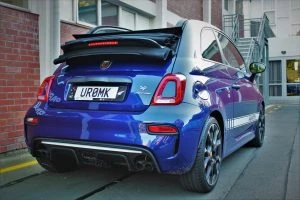
Abarth 595 Convertible
Very cute and not too expensive, the Abarth 595 Convertible has stacks of style and plenty of road presence even though it happens to come in rather small packaging. The Competizione is the more expensive (around $36k) of the two models available but offers more features and more grunt. You have FWD and the weight of the car is only a little over 1000 kg, so the driving experience is dynamic and loads of fun. The 1.4-litre Turbo unleaded petrol engine offers 132 kW and 250 Nm in the Competizione (0-100 km/h in less than 7 seconds, top speed 220k m/h) and 107 kW and 206 Nm in the standard version. Fuel economy sits on average at around 6-to-6.5 litres/100 km. With a 3-year 150,000 km warranty and 3 years roadside assist you are well covered. Expect to pay from around $35k for the base model and $41 k for the Competizione.
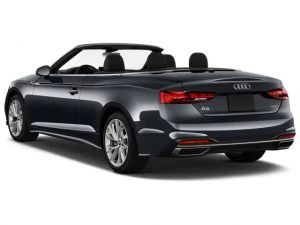
Audi A5 40 TFSI S line
It costs around $96k new, but Audi’s A5 Convertible is top quality and superb to drive. Gorgeous interiors, excellent comfort and technology make this AWD Audi Convertible a very nice ownership prospect. There are two 2.0-litre petrol engines: A very economical mild-hybrid (6.5 litres/100 km) 140 kW/320 Nm version for those who like FWD (0-100 km/h in around 7 seconds), and a smooth and powerful 183 kW/370 Nm version with AWD (0-100 km/h in around 6.5 seconds). Both engines are linked to Audi’s efficient seven-speed S tronic dual-clutch automatic gearbox. To be honest, the AWD version is only a few grand more at a bit over $100k, so I’d be looking to get into this one. Both versions should return between 6 and 7 litres/100km. A 3 year unlimited km warranty is good, as too the 3 year roadside assist package.
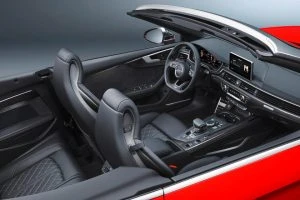
Audi S5 Convertible
Like the Audi A5 convertibles above, the S5 has all the goodies, gorgeous lines and comfortable interiors with all the modern gadgets. The S5 has the awesome 3.0-litre turbo V6 Petrol delivering a potent 260 kW of power and 500 Nm of torque to the AWD system, and it uses an eight-speed Tiptronic transmission. You can scamper from a standstill to 100 km/h in around 5 seconds, while the top speed is limited to 250 km/h. A 3 year unlimited km warranty is good, as too the 3 year roadside assist package. Expect to pay around $135k for a new one of these.
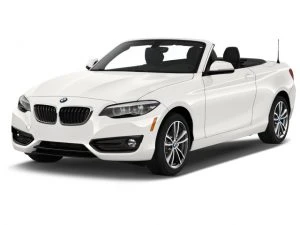
BMW 2 Series Convertible
The BMW 220i Luxury Line and 220i M Sport convertibles use the same 2.0-litre Turbo powerplant with 135 kW of power and 270 Nm of torque. The eight speed sport automatic does a great job of providing quick gear changes while linking the smooth operative action to the optimum power levels. This engine should offer a combined fuel consumption of around 6.5 litres/100 km. The car rides nicely. Those wanting the best in comfort and equipment will go for the Luxury Line, while the M Sport concentrates the suspension more towards sport and the flavour a bit racier. BMW The 220i M Sport uses the performance 3.0-litre Turbo engine with 250 kW of power and 500 Nm of torque. This is a quick car and you can expect a run through the 0-100 dash to take less than 6 seconds. The car’s top speed is limited to 250 km/h, while average fuel consumption will be around 8 litres/100 km. All BMW 2 Series convertibles are RWD and offer premium quality interiors and technology. Prices start at around $65k for the Luxury Line, $68k for the M Sport 2.0-litre and $92k for the 3.0-litre M Sport.
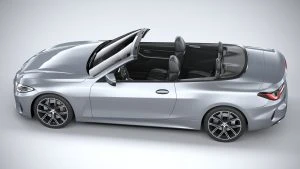
BMW 4 Series Convertible
This is one of the prettiest convertibles available for 2021. The new BMW 4 Series Convertible is offered with a 2.0-litre turbo-petrol four-cylinder producing either 135 kW/300 Nm (420i, around $90k) or 190 kW/400 Nm (430i, around $108k); while the flagship M440i xDrive AWD (around $136k) variant uses a mild-hybrid 3.0-litre inline turbo-six that unleashes 285 kW/500 Nm and is capable of reaching 100km/h in 4.5 seconds. A 3 year unlimited km warranty along with 3 year roadside assist makes life easy. All are well equipped, comfortable and stylish cars.

BMW Z4 Convertible
Another gorgeous looking convertible is the latest Z4 two-seater Convertible Roadster, which has a lower centre of gravity than before and is further helped dynamically by a 50-50 weight distribution. Three engines are available: The BMW Z4 sDrive 20i M Sport has the 145 kW/320 Nm 2.0-litre; the BMW Z4 sDrive 30i M Sport uses the 190 kW/400 Nm upgraded 2.0-litre version; the BMW Z4 40i offers 250 kW and 500 Nm with its 3.0-litre turbo in-line six petrol. Prices are around $98k, $122k and $144k, respectively. Even the 145 kW engine sings sweetly and packs a punch. All handle beautifully, making this the best Z4, yet. This has to be one of the best looking Roadsters on the road, and they are delightful to drive. The Z4 40i can dispatch the 0-100 km/h dash in just 4 seconds. A 3 year unlimited km warranty along with 3 year roadside assist is available to new car buyers.
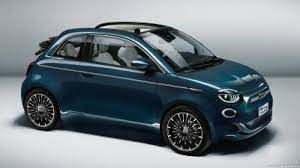
Fiat 500C
For somewhere between $25k and 28k, you could get yourself into a brand new Fiat 500 Convertible. They boast a 5-star ANCAP safety rating for what is a very cute, small car. In case you weren’t aware, the Abarth models, mentioned above, are the performance based versions of the Fiat 500C. You should average even less than 5 litres/100 km at times, and the 1.2-litre ULP motors are free revving, fun and relatively refined. Weighing in at just 935 kg these have a bit of zip about town and will happily hold their own at the legal open road limit. Both the 500C Club and 500C Lounge are well kitted out with modern technology and practicality, so life with a small 500C brings plenty of smiles. A 3 year 150,000 km warranty and 3 year roadside assist is good piece of mind motoring.
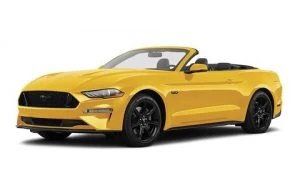
Mustang Convertible
Here would be the coolest convertible on the market. The Mustang’s muscle, sound and power delivery is nothing short of amazing. The GT version (0-100 km/h in around 4.5 seconds) costs around $75k new and boasts a 339 kW/556 Nm 5.0-litre V8. It can be had with either the standard six-speed manual, or the optional 10-speed auto gearbox. For around $61k, the Mustang High Performance 2.3-litre four-cylinder still delivers on performance (0-100 km/h in around 5.5 seconds) and has 236 kW of power and 448 Nm of torque to play with. Manual and auto versions are also available for the 2.3 High Performance. Both versions are RWD and are immensely rewarding to drive with the top up or down. These are hard to beat for value, performance and road presence. You can’t argue with the 5 year/unlimited km warranty, either.
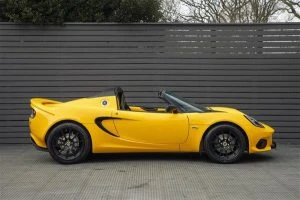
Lotus Elise
Here is another very cool convertible. The strikingly stylish Lotus Elise Convertible offers two models for 2021. The Sport 220 offers a 1.8 litre, 162 kW, 250 Nm ULP engine with RWD and a six-speed manual gearbox. A 0-100 km/h sprint for this version takes around 4.9 seconds. The Lotus Elise Cup 250 offers a 1.8 litre, 183 kW, 250 Nm ULP engine with RWD and a six-speed manual gearbox. A 0-100 km/h sprint for this version takes around 4.7 seconds. Few other convertibles cars can keep up with a Lotus Elise around a tight track as they are so light, agile and fast. A 3 year unlimited km warranty links with a 3 year roadside assist package when you buy a new one of these, which will be a little north of $100k.
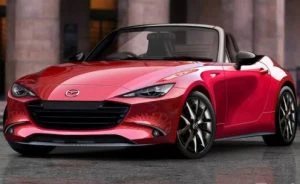
Mazda MX-5
There are two engines available: The 97 kW/152 Nm 1.5-litre and the 135 kW/205 Nm 2.0-litre, both offering the choice of six-speed manual or automatic transmission and RWD. A limited-slip differential and a finely-tuned suspension ensure a superbly balanced and grippy chassis with plenty of fun in the sun a certainty. Expect to pay between $40 and $52k depending on the model and trim. Enjoy! This has become a roadster icon over the years, and the latest model looks sharp and is kitted with all the latest safety gear.
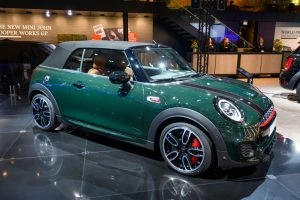
Mini Convertible
You’re paying anywhere around $50k-and-$75k for a new Mini Convertible – it all depends on the model. They can be had with various engines and styles. Three-door models include the base 100 kW/220 Nm 1.5-litre three-cylinder Cooper, the 141 kW/280 Nm four-cylinder Cooper S, and the mighty 225 kW/450 Nm JCW. Always cool and always impressively well-built, Mini’s are a classic. JCW versions are insanely fast and capable, and all come with 3 year/unlimited km warranty and a 3 year roadside assist package.
You could also look at some other marques like Porsche, Jaguar, Mercedes Benz or Lexus when it comes to buying a new convertible but you’ll be paying well north of $100, $200k or even $300k for some of these. Aston Martin, Bentley, Ferrari, Lamborghini, McLaren and Rolls Royce also offer convertible options in Australia, however their prices are for those loaded with money.
2021 Mitsubishi Outlander GSR PHEV: Private Fleet Car Review
Hybrid technology has fast become part of the automotive landscape. First seen in Toyota’s Prius, it hasn’t taken long to trickle down into mainstream passenger cars and SUVs. However, a new form of hybrid tech, the plug-in hybrid version, has taken more time. A front-runner for SUV PHEVs has been Mitsubishi with their Outlander. The Range: In 2021 they offer three; the ES, GSR, and Exceed. We spent a week with the sporting tuned (by Bilstein, no less) GSR Hybrid. It’s priced at $56,490 drive-away, and has a pair of electric motors for front and rear wheel drive simultaneously via a single ratio transmission. Main power is from the standard 2.4L petrol engine with 94kW and 199Nm. That’s on 91RON unleaded.
The Range: In 2021 they offer three; the ES, GSR, and Exceed. We spent a week with the sporting tuned (by Bilstein, no less) GSR Hybrid. It’s priced at $56,490 drive-away, and has a pair of electric motors for front and rear wheel drive simultaneously via a single ratio transmission. Main power is from the standard 2.4L petrol engine with 94kW and 199Nm. That’s on 91RON unleaded. The electric motors offer 60kW (front) and 70kW (rear), and are charged via one of two ports on the rear right quarter. The petrol tank is good for 45L and the economy is rated as 1.9L/100km on 91RON unleaded. Although Mitsubishi’s system constantly updates as you drive, in the Hybrid there are sub-menus to check charge rates, battery usage, and fuel over given times.
The electric motors offer 60kW (front) and 70kW (rear), and are charged via one of two ports on the rear right quarter. The petrol tank is good for 45L and the economy is rated as 1.9L/100km on 91RON unleaded. Although Mitsubishi’s system constantly updates as you drive, in the Hybrid there are sub-menus to check charge rates, battery usage, and fuel over given times.
Our final figure would be somewhere around the 5.5L/100km mark if we read the graph correctly. That’s on our usual 70/30 urban to highway runs. The battery is rated at 12kWh and has an on-board charger rate of 3.7kW. using a standard home system it’s somewhere between 6.5 to 7 hours to “fill”. The plugs are Type 1 and CHAdeMO. Drive is engaged via a simple lever with an electronic Park function. There is also an adjustable Brake mode to recover more kinetic energy if possible. This works best on longer downhill runs.
The battery is rated at 12kWh and has an on-board charger rate of 3.7kW. using a standard home system it’s somewhere between 6.5 to 7 hours to “fill”. The plugs are Type 1 and CHAdeMO. Drive is engaged via a simple lever with an electronic Park function. There is also an adjustable Brake mode to recover more kinetic energy if possible. This works best on longer downhill runs.
At full charge, the PHEV offers up 55 to 55 kilometres as an estimated electric only range. For Australia, a range of 100 kilometres would be better. As an example, from the lower reaches of the Blue Mountains to Sydney is something between 70 to 80 kilometres… A charge gauge in the driver’s display shows how much is being harvested, as does a dial in the main touchscreen sub-menu. When running low, a button on the left side of the console next to the drive lever offers save or charge. This engages the petrol engine and makes it a generator for the batteries.
A charge gauge in the driver’s display shows how much is being harvested, as does a dial in the main touchscreen sub-menu. When running low, a button on the left side of the console next to the drive lever offers save or charge. This engages the petrol engine and makes it a generator for the batteries. Drive to each corner is via a single speed transmission, with drive modes such as Sport, Snow, Mud, plus battery save and charge modes. Stability on road comes from Mitsubishi’s much vaunted S-AWC (Super All Wheel Control) and Active Yaw Control. Sport lifts the overall performance and adds some serious extra squirt to the already rapid acceleration.
Drive to each corner is via a single speed transmission, with drive modes such as Sport, Snow, Mud, plus battery save and charge modes. Stability on road comes from Mitsubishi’s much vaunted S-AWC (Super All Wheel Control) and Active Yaw Control. Sport lifts the overall performance and adds some serious extra squirt to the already rapid acceleration.
The GSR nameplate, once synonymous with the Lancer, adorns the powered tailgate. The current body shape is due for a hefty facelift (pictures at end) and release later in 2021 with a heavily reworked nose, and squared off rear with bumper lines lifted from the Pajero Sport.
As it stands there are the integrated eyebrow running lights in the headlights, wrapped in the chrome strips that boomerang forward then back towards the wheelarches. The current profile is largely uncharged for some years, with a sloped rear window line and broad spanning rear lights. The Drive: Bilstein provide the shock absorbers for the MacPherson strut and coil front, multi-link and stabiliser bar rear. 225/55/18 wheels and tyres from Toyo unpin the body. They offer decent grip, but even with the dual axle drive there was some minor slippage on damp roads.
The Drive: Bilstein provide the shock absorbers for the MacPherson strut and coil front, multi-link and stabiliser bar rear. 225/55/18 wheels and tyres from Toyo unpin the body. They offer decent grip, but even with the dual axle drive there was some minor slippage on damp roads.
We say damp as we drove it during the “rain bomb” that hit most of Australia’s southern eastern coast. When driven during the not-so-heavy patches, and on roads that had drained most of the surface water away, driving confidence was high. It was on corners and downhill runs when more circumspect driving was required.
What was noticeable was the fantastic tune of the suspension and the damping of the Bilsteins. Although the ride could be described as hard, given the GSR nomenclature, it was on the side of comfort with swift response smoothing out freeway dips and rises without feeling as if it jolted at each end of the travel. Smaller bumps jarred but again only for a moment as the Bilsteins disappeared those impacts rapidly.
Although the ride could be described as hard, given the GSR nomenclature, it was on the side of comfort with swift response smoothing out freeway dips and rises without feeling as if it jolted at each end of the travel. Smaller bumps jarred but again only for a moment as the Bilsteins disappeared those impacts rapidly.
Freeway driving had the rapid response telling the driver each square inch of road surface quality without any loss of comfort.
However, one one somewhat soggy and rutted gravel-style track, we heard uncharacteristic groans from the front strut tower caps. The suspension felt as if the stiffness of the setup was overwhelming the caps. As a result, speed had to be dropped to essentially a crawl in order to feel that travel was safe and not damaging the towers.
The Interior: Inside it’s water-resistant micro-suede cloth seat and leather bolsters. They’re as supportive as they come, and electrically powered for the driver. They’re heated up front too, unusual but welcomed for cloth pews and they’re quick to generate heat. There is only heating, though, and the switches are rocker for low or high.
The 8.0 inch touchscreen houses plenty of information and for the PHEV there are sub-menus aplenty to access information on how the hybrid system is working. There is also a punchy eight speaker audio system with DAB plus Bluetooth streaming and the smartphone apps. The interior however does show its age with no smartphone charge pad, an item sure to be included with the update…we hope.
Dashboard design for the Outlander is classic Mitsubishi; open and broad, well spaced for buttons, soft touch materials, and an organic flowing design. The steering feel feels on the large side compared to other marques however turn to turn lock is made easier in context. Head, leg and shoulder room for the five seater is huge with 1,030mm and 1,039mm head and leg up front. It’s a five seater due to the battery’s location and wiring for the charge port. Second row passengers have a pair of USB charge ports, and there is one plus a 12V up front. Cup and bottle holders number four apiece in total.
It’s a five seater due to the battery’s location and wiring for the charge port. Second row passengers have a pair of USB charge ports, and there is one plus a 12V up front. Cup and bottle holders number four apiece in total.
The powered tailgate is light and seems to prefer being opened by hand however the gentle push of the drop button does the trick in closing it. Folod the second row seats and 1,602L of capacity is available to you. There is also a 12V socket in the rear along with cup holders for seven seat non-hybrid Outlanders. Two underfloor nooks offer some small extra space and hold the charge cable and jack equipment. The Safety: Adaptive Cruise Control with sensor distance changing holds hands with the Forward Collision Mitigation system. This has pedestrian detection but not cyclist. This means the organic safety component needs to be scouting forward. Lane Departure and Blind Spot Warning systems are in place.
The Safety: Adaptive Cruise Control with sensor distance changing holds hands with the Forward Collision Mitigation system. This has pedestrian detection but not cyclist. This means the organic safety component needs to be scouting forward. Lane Departure and Blind Spot Warning systems are in place.
Lane Change Assist and Rear Cross Traffic Alert are also standard. Auto functions for high beam and wipers are standard, as is a rear view camera. Sensors front and rear are standard. Seven airbags include a driver’s kneebag.
The Rest: Warranty for the battery is eight years or 160,000km. Warranty details can be found here. Capped price servicing varies between the PHEV and non-hybrids. More on the 15,000k or 12 monthly service can be found here.
At The End Of The Drive. We have driven a few Outlander PHEVs over the last three to four years.
Our first run was in late 2017, and it was given a solid workout. Driven from the eastern fringes of the Blue Mountains to the central western town of Temora, a historic R.A.A.F base and now a museum, the Outlander PHEV showcased how these sorts of hybrid vehicles work nicely. It’s noticeable that in real terms only minor changes have been made since outside and in.
With a new Outlander on the way, buyers of the current model won’t be disappointed. As a range, it offers good pricing, good performance, and good value. Comfort in the GSR is high and the only niggles were the out of the ordinary complaints from the front end.
As a driver’s car, it meets that goal, and as a package for showcasing hybrid tech, it does an admirable job. Check out the 2021 Mitsubishi Outlander PHEV range here.
Mercedes Commits to a Broad Line-up, Despite Fixed-Price Strategy
Hot on the heels of Japanese rival Honda, Mercedes-Benz is set to restructure its business as it moves towards an agency-style structure in the new car market down under. The move is pencilled in for January 1, 2022, although the luxury auto-maker is still working to put the finishing touches on all the details before then.
Explaining the changes
Like Honda, it is expected that Mercedes-Benz dealers will take on a role whereby they act as an agent for the parent company. With this, prices will also be fixed, the parent company will dictate terms of business, and headquarters will also hold all vehicle stock, thereby limiting the potential for customers to negotiate directly with the dealer.
Unlike its rival, however, Mercedes-Benz has suggested that it will look to differentiate itself in one key area from what Honda is currently doing – that is, by committing to retain the breadth of its model line-up and not cut any entry-level variants.
In supporting this plan, the company points to the fact that it is seeing success in the luxury component of every segment, where it is “winning” in most of these areas. So while Honda might have plans to deliberately streamline its line-up and cut total sales volumes in order to generate higher margins, Mercedes-Benz is going about things differently.

Why there still might be less ‘choice’
Mercedes-Benz will also focus on customer service and satisfaction by addressing core areas that it has identified as important. This includes improving the accessibility to purchase any vehicle from its range online, and also embracing transparent pricing.
Although Mercedes-Benz has committed to its broad line-up, there is still an expectation that each model range will be simplified so as to improve the buying experience for customers by minimising confusion. After all, sometimes too many choices for something largely similar can be problematic for customers who are not yet ‘over the line’.
There is one potential drawback with this. If Mercedes-Benz does opt to simplify each of its model ranges, there is a possibility that optional extras may be ‘built’ into the existing models that are currently more affordable in each range. The risk here is that prices could very well increase, although at this stage details remain to be seen, even if the company has just increased prices across the board for the third time in just over a year.
The good news sees the breadth of Mercedes-Benz’s line-up set to remain, unaffected by the move towards an agency model. What is found in each range, however, will make for interesting consideration.
Ammonia as a Fuel for Cars

Who would have thought that liquid ammonia might just be that untapped energy source the world needs. All the flimflam around carbon emissions, EVs and hydrogen powered cars pales substantially when you start to grasp how ammonia could well become the biggest driving force for global transportation, given the right technology. All it would take is more clean, green electricity via solar and wind energy and, hey presto, the ability to make more liquid ammonia becomes way easier, less costly and environmentally friendlier. But let’s not stop there; let’s match that new ammonia production methodology with perfected ammonia combustion technology, and we have ourselves a green ammonia-fuelled vehicle.
Ammonia has been around for well over a hundred years and has many uses. The current dated process of making ammonia isn’t green. Combining nitrogen molecules that come from the air with hydrogen molecules that come from natural gas and coal creates huge amounts of greenhouse gases. So to make ammonia the green way has taken scientists to perfect the art of taking hydrogen from water and separating it from oxygen atoms using electricity.
Australia is the place to be for producing liquid ammonia the green way. There is so much practical solar energy available here in Australia for getting electricity from an array of solar panels which feed into the liquid ammonia production plant. Wind energy can equally be harnessed and fed into the production plant.
When this clean electricity gets to the production plant, electro chemical cells use electricity and catalysts to make components of air and water into ammonia. All of this process is clean and is performed without fossil fuels and the extreme heat that is required by older methods of ammonia production.
The older ammonia production plants are also costly to run and produce carbon dioxide emissions. Australia could easily be a world leader in producing cleanly made liquid ammonia via solar and wind energy
Research for perfected ammonia combustion technology for vehicle engines is ongoing and could well be all we’re waiting for. Ammonia (NH3) is made up of 3 hydrogen atoms bonded to a single nitrogen atom; it can serve as a low-carbon fuel, where the only emissions after ammonia combustion would be that of nitrogen and water.
An ammonia-fuelled vehicle would operate in much the same way as our conventional combustion motor designed for running on fossil fuels. The liquid ammonia is burned with oxygen to create energy. Unlike conventional gasoline vehicles, ammonia-powered vehicles would not emit CO2. Here is a win-win scenario that it would seem necessary to mandate.
In a hydrogen-powered car, a hydrogen fuel cell powers the vehicles’ on board electric motor, only giving off heat and water vapour as a result. Likewise, an ammonia fuel cell gives off heat, nitrogen and water vapour.
Researchers in spark-ignition systems are continuing to perfect ammonia combustion technology. The main hurdle that needs to be overcome in an ammonia-fuelled combustion engine is that when ammonia is combusted, the combustion produces a flame with a relatively low propagation speed. This low combustion rate of ammonia causes the combustion to be inconsistent under low engine load and/or high engine speed operating conditions. Scientists are also investigating the possibility for ammonia to be used in fuel cells as a cheap, clean and powerful energy source for vehicles. Researchers have succeeded in developing a new catalyst that burns ammonia (NH3) at a low temperature.
Australia could create solar- and wind-powered ammonia production plants which could then be the tap sources for liquid ammonia. The Australian grown ammonia could be used locally to power large vehicle fleets as well as for exporting around the world for overseas use. This is all very exciting stuff and will be something I’ll continue to follow as information and details become available.



